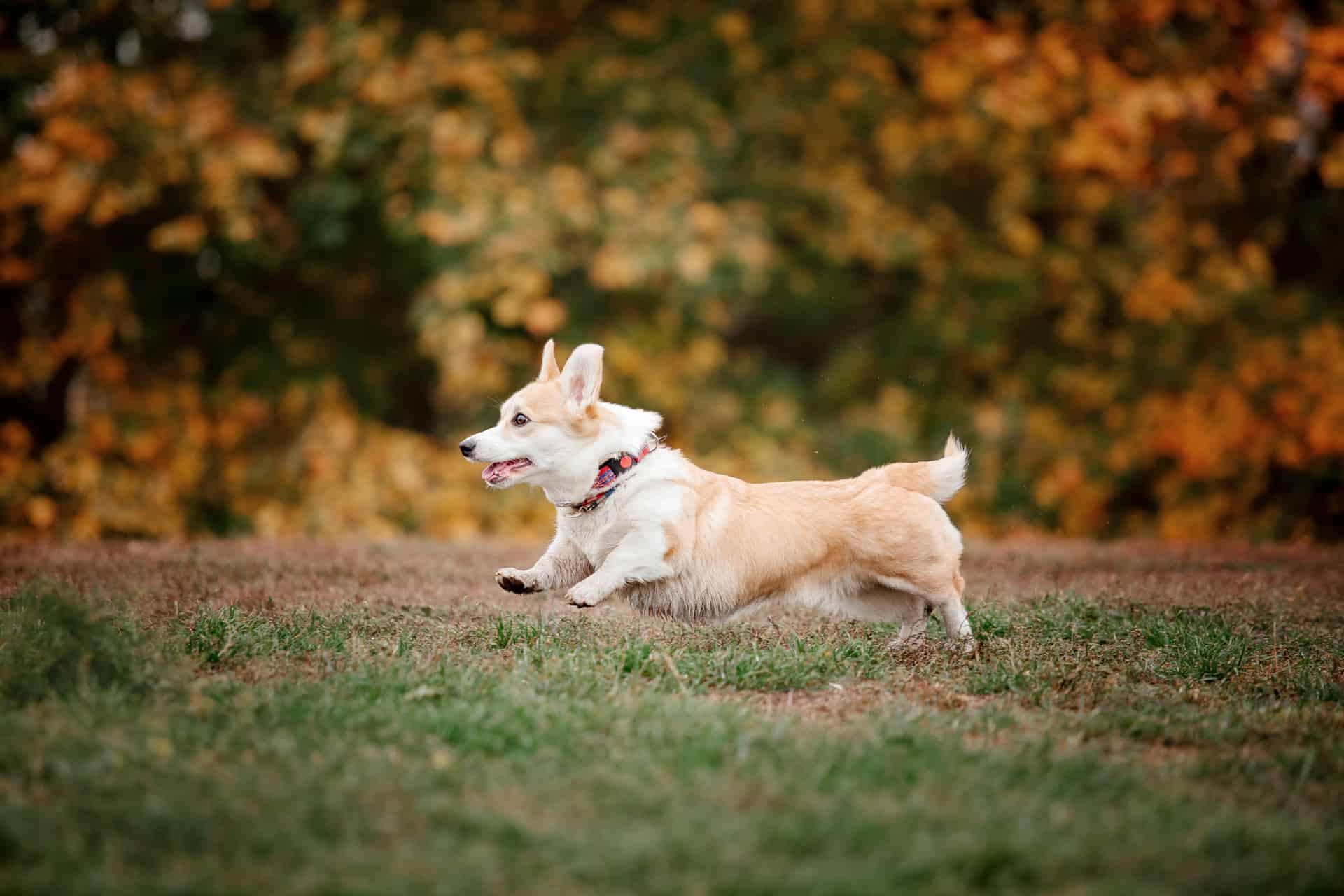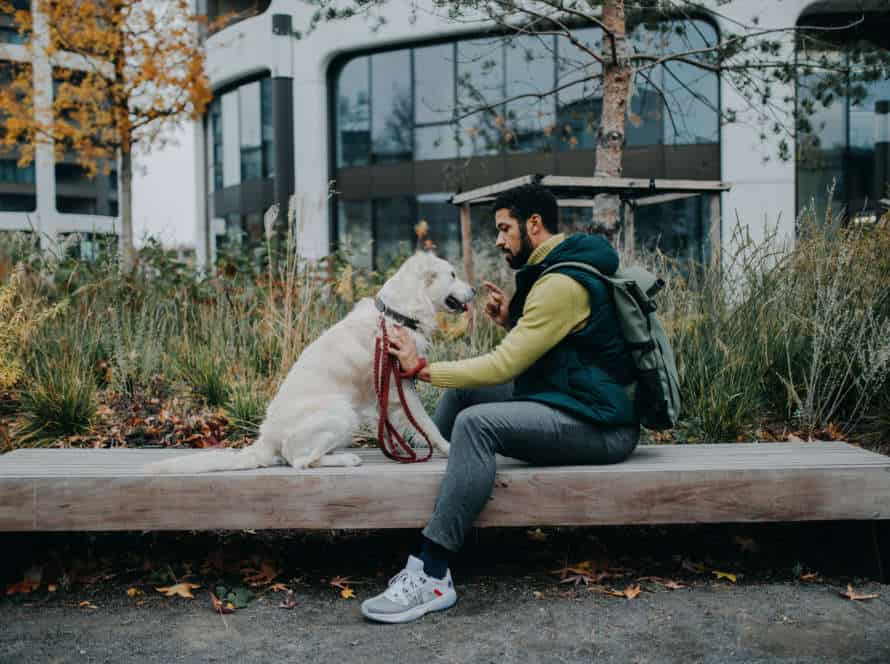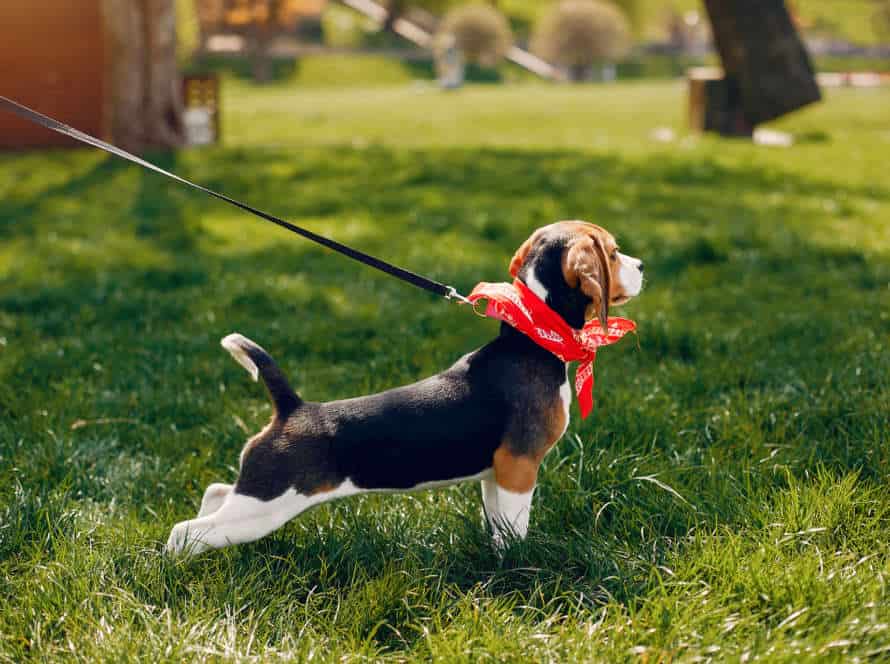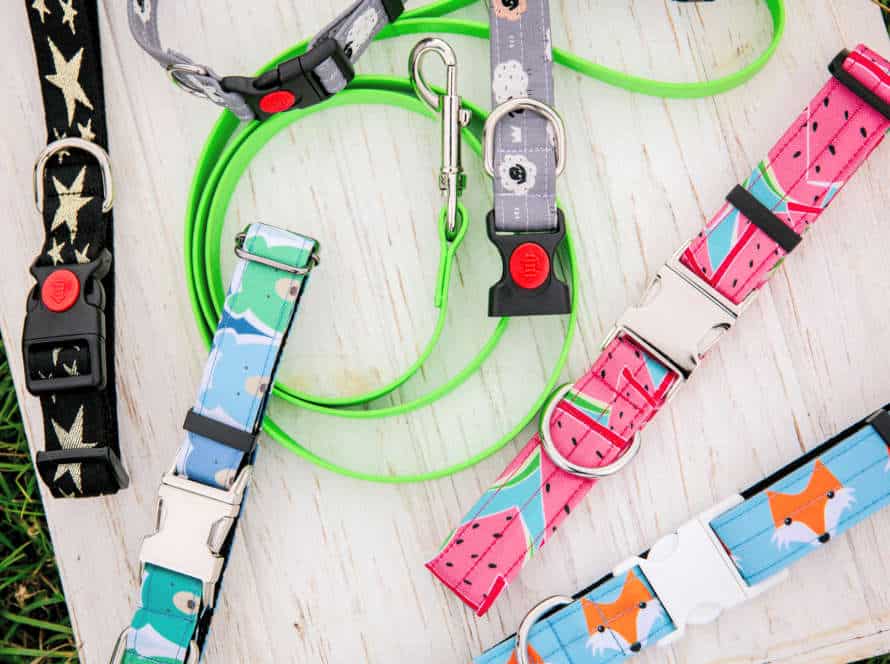Reinforcing the Come Command for Life-Long Reliability
“Come” is an essential command for any pet dog to learn. It’s important to reinforce it all through your dog’s life. Here are some tips:
- Use rewards like treats, toys, and praise for your pup coming to you.
- Practice in several places with various distractions to help your pup understand the command.
- No punishing if they don’t come when you call.
- Try a long leash in training sessions so they obey even when off-leash.
- Be consistent and patient in teaching them. Reinforce “come” all the time.
- Pro tip: To reinforce “come,” add a daily routine to their routine. E.g. call them before feeding, playing, or letting them outside.
Understanding the importance of reinforcing the come command
Reinforcing the ‘come‘ command in your doggy is crucial. It keeps your pup obedient and dependable. Teaching ‘come‘ isn’t just about following orders. It strengthens your relationship with your pet and lays the groundwork for further training. Knowing the importance of ‘come‘ and how to reinforce it is the initial step.
Why reinforcement is crucial for long-term obedience
Reinforcement is vital for long-term obedience. It increases the neural pathways that make the behavior possible. So, reinforcing the “come” command is key for permanent dependability.
How does reinforcement work? When you tell your dog to “come” and they comply, they get a positive outcome such as a treat, affection, or praise. This positive reinforcement creates a neural pathway in the pup’s brain that links the “come” command with the positive outcome. Over time, with consistent reinforcement, the neural pathway becomes stronger and more automatic, which means reliable behavior.
But if you stop reinforcing the “come” command, the neural pathway will weaken, resulting in unreliable behavior. For life-long reliability, it’s important to constantly reinforce the “come” command, even if the pooch appears to have mastered the behavior.
Common mistakes of not reinforcing the come command
Reinforcing the “come” command is key for successful dog training in the long run. But, there are some mistakes dog owners often make when reinforcing the “come” command.
Mistake #1: Calling your dog when they’re in trouble or you’re angry. This can create bad links with the command. Instead, practice calling your pup when things are neutral or positive, until they’re responsive.
Mistake #2: Not reinforcing the command consistently. You need to reinforce the “come” command often and regularly to make sure it’s reliable in the long term. Use treats, affection and praise to reward your dog when they comply.
Mistake #3: Allowing your dog to ignore the command. This can set you back in training. Make sure you always use positive reinforcement each time you use the command.
By avoiding these common errors, you can reinforce the “come” command effectively and ensure long-term success in your dog’s training.
Benefits of reinforcing the come command
The “come” command is super important for any dog. It could save their life one day. So, reinforce it regularly! This offers so many good things.
- For instance, it improves behaviour and obedience by teaching an essential command.
- Plus, it builds trust and strengthens communication between you and your pet.
- Also, it ensures safety in case of an emergency.
Reinforcing the “come” command takes time and effort. But, the benefits are worth it. Be patient, consistent, and positive. Your pet will master it and give you peace of mind.
Techniques for reinforcing the come command
Your pet’s safety and reliability depend on the come command being ingrained in them. To create a strong bond with your pet, you need to make sure they obey this command always. Here’s how you can help them do that:
- Use techniques to reinforce the come command.
- This will help them respond to you in any situation for life.
Positive reinforcement techniques
Positive reinforcement is key for teaching your pup the “come” command. Here’s how:
- Treats – Offer a treat each time they obey.
- Verbal praises – Say “Good boy/girl!” or “Well done!” to show approval.
- Games – Play fetch or hide-and-seek as rewards.
- Consistency – Use these techniques every time and be patient.
You’ll have a reliable pup for life if you stick to this!
Negative reinforcement techniques
Negative reinforcement is not a good choice for teaching your pup the “come” command. It can make them mistrustful, scared, and hostile. Positive methods are better for gaining trust and obedience. Here are a few tips:
- Give treats and toys when your dog comes to you.
- Practice in different situations and distractions, getting more difficult over time.
- Don’t punish or use force if your dog doesn’t come.
- Give praise and rewards right away, even if it takes longer than expected.
Positive reinforcement is kinder and works better for teaching your dog obedience and loyalty.
Combining positive and negative reinforcement techniques
The “come” command is super important for your pooch. To make sure it works for life, use a mix of positive and negative reinforcement.
Positive reinforcement means giving him something he likes – treats, praise or playtime – when he obeys. This teaches him the command is good.
Negative reinforcement takes away something he dislikes, like ending a leash correction, when he comes. This shows him coming to you is the best choice, even when distracted.
Using both these techniques together, you can motivate your pup to obey quickly, even in unexpected moments.
Strategies for long-term reinforcement
Reinforcing the “Come” command is key for life-long obedience. Strategies and techniques can help you achieve this. We’ll discuss why long-term reinforcement is important. This way, you can ensure your pup will always come when you call them.
Consistency in training
Consistency is essential for training dogs. To reinforce the ‘come’ command, try these tips:
- Use treats and praise for positive reinforcement when your dog comes to you.
- Practice the ‘come’ command in various settings with a long lead or in enclosed areas.
- Never use the ‘come’ command to punish your dog. This will make them link it with negative experiences.
- Speak and act consistently when giving the command.
- Be patient with your pup and don’t expect instant results. With consistency and reward, your dog will learn to relate the ‘come’ command with good experiences and respond when called. Pro tip: Reward your dog every time they come even if there’s a delay.
Gradual increase in distractions
Strategically adding distractions is a great way to reinforce the “come” command with your pup. Doing this leads to long-term obedience.
Start off by using a leash in a quiet area. Then, gradually increase distractions. Such as other people, vehicles, and other dogs.
Make sure to reward your dog when they obey the “come” command in the presence of distractions. This will ensure that the behavior is reinforced.
Regular practice sessions with varying types of distractions will help your dog stay obedient.
Remember to take it slow and be patient with your pup. Adapt the level of distraction to their learning pace to get the best results!
Use of treats and rewards
Using treats and rewards is a great way to make sure your dog remembers the “Come” command forever. Here’s some advice:
- Give your dog a snack they really love, like chicken or cheese.
- Reward them right away when they come to you.
- Slowly use fewer snacks but still praise and say things like “Good boy/girl!” or “Yes, come!“
- Change up the rewards and when you give them to keep your pup interested.
Pro tip: Never punish your pet for not coming when called. This could make them scared of the command instead. Positive reinforcement works better.
Analysing the effectiveness of reinforcement
Reinforcement has been recognised as a strong way to train your doggo. From operant to classical conditioning, reinforcing a behaviour over time can help your pup learn better. Is reinforcement helpful to teach the ‘come’ command in the long run? Let’s see!
Identifying improvements and setbacks
Reinforcing the “Come” command is essential. You need to see if it’s working.
Positive signs? Your dog obeying quicker, hearing you from further away and coming happily.
Negative signs? Ignoring it, fear, distracted or aggressive reactions.
Analyze the reinforcement techniques. See what methods work best for your pup. Adjust to fix any setbacks and encourage improvements.
Pro Tip: Use treats and praise for good behavior. Not punishment. That can confuse or scare your dog.
Adjusting reinforcement techniques for better results
For life-long reliability with the “come” command, making some tweaks to reinforcement techniques can make a huge difference!
Here are 4 techniques to try:
- Employ higher-value treats or toys only when training.
- Reward your pup on a less predictable schedule.
- Incorporate play and praise into your training.
- Practice the “come” command in various settings, like the backyard, park, or beach.
By adjusting these reinforcement techniques, you can improve your pup’s response, and strengthen your bond!
Measuring progress and success through reinforcement
Analyzing progress and success is key to reinforce the “come” command in dogs for life-long reliability. Here are some tips to help you measure it:
- Record the amount of times your pup responds to the command after you reinforce it, and set realistic goals.
- Use positive reinforcement, like words of praise and treats, to motivate your dog to obey the command.
- Gradually increase the level of difficulty by trying the command in different environments, with distractions and at longer distances.
- Track the effectiveness of the reinforcement techniques you use, such as how often, what type, and when you reinforce it.
Analyzing progress and success will help you understand what’s working and adjust your reinforcement strategies for life-long reliability with the “come” command.
Common Mistakes in Reinforcement of the Come Command
Teaching your pup the “come” command is essential. But, many people don’t do it right. Here are the most frequent mistakes. And, how to avoid them for life-long reliability.
Over-reliance on treats and rewards
Too much reliance on treats and rewards is a common problem for teaching the “come” command.
This can affect its long-term reliability.
Treats and rewards can be helpful, but relying on them too much can mean the dog will only respond when it sees a treat.
To stop over-reliance, use praise and love as well.
Vary the rewards, so your pup doesn’t get used to one type.
Keep up with positive reinforcement techniques.
Pro tip: Use a long-line leash and reduce its length as the dog gets better at responding to the “come” command. This makes sure they stay safe and successful.
Inconsistent reinforcement
Inconsistent reinforcement is a frequent error when teaching a dog “come“. It can result in unreliable behavior over time. Here are some tips to prevent this mistake and get lifelong reliability:
- Always give a reward when your pup comes, even if it takes longer.
- Mix up the reward – treats, praise, or something else – to maintain their interest.
- Practice in various places and with distractions to make sure they obey in any situation.
- Don’t use the command for negative things like punishment or grooming.
By using consistent and positive reinforcement, you can be sure your canine will come to you joyfully when called.
Lack of patience and persistence in training
One of the major blunders when training a dog to obey the “come” command is the lack of patience and persistence from the owner.
This training involves more than just teaching your pup to obey in the short-term.
It’s a long-term process that needs regular reinforcement and patience.
To guarantee reliability of the “come” command, owners should:
- Train their dogs in a low-distraction setting before going to more chaotic environments.
- Give high-value rewards like treats, toys, and praise to reinforce the behavior.
- Practice regularly and consistently, multiple times a day over numerous weeks.
- Don’t use the “come” command for negative reasons, like punishment.
By sticking to these tips, you can reinforce the “come” command in your dog, making sure your pet’s lifelong reliability and obedience.
Frequently Asked Questions
1. How can I reinforce the “come” command for life-long reliability?
A: You can reinforce the “come” command by consistently practicing it in different environments and situations, rewarding good behavior, and using positive reinforcement techniques such as treats or praise.
2. What are some common mistakes to avoid when reinforcing the “come” command?
A: Some common mistakes to avoid include using the “come” command in a negative or angry tone, punishing your dog for not coming, and not consistently practicing and reinforcing the command.
3. How long does it take to reinforce the “come” command?
A: The length of time it takes to reinforce the “come” command can vary depending on the individual dog and the consistency of practice. However, with consistent practice and reinforcement, most dogs can learn to reliably come when called within a few weeks to a few months.
4. What are some effective reinforcement techniques for the “come” command?
A: Effective reinforcement techniques include using positive reinforcement such as treats or praise, practicing in a variety of environments and situations, gradually increasing the distance and distractions, and associating the “come” command with positive experiences.
5. How can I get my dog to come to me even when distracted?
A: You can increase the reliability of the “come” command by practicing in environments with distractions, using high-value treats or toys, and gradually increasing the distance and duration of the “come” command.
6. Can I teach an older dog to reliably come when called?
A: Yes, older dogs can still learn and reinforce the “come” command with consistent practice and reinforcement techniques. It may take longer than with a younger dog, but it is still possible to achieve life-long reliability.







